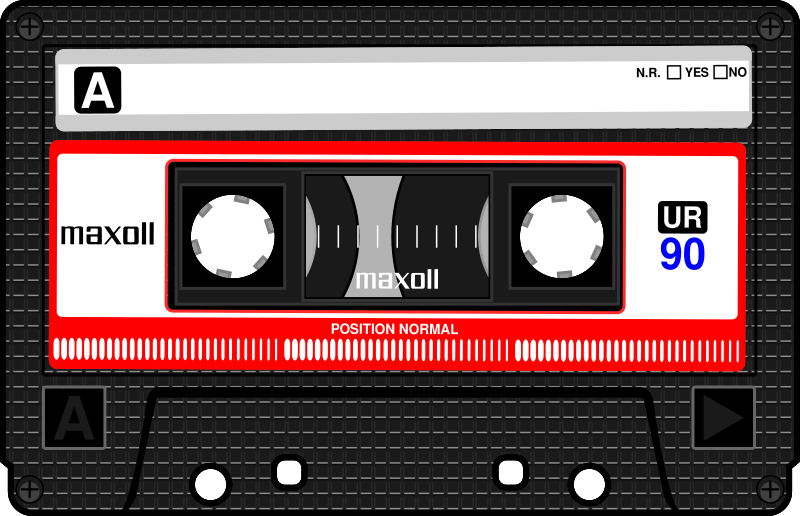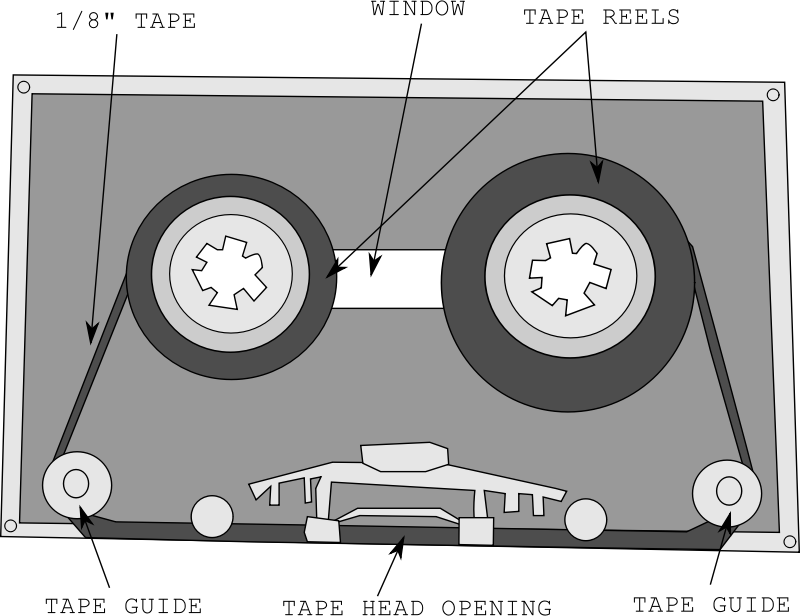The Compact Cassette, also commonly called the tape cassette,[2] cassette tape, audio cassette, or simply tape or cassette, is an analog magnetic tape recording format for audio recording and playback. It was developed by the Dutch company Royal Philips in Hasselt, Belgium, by Lou Ottens and his team.
It’s with sadness that we note the passing at the age of 94 of the long-time Phillips engineer Lou Ottens, who is best known as the originator of the Compact Cassette audio tape format that was so ubiquitous through the later decades of the 20th century.
In 1963, it was presented at the Berlin Radio electronics fair and soon became a worldwide success when Ottens struck a deal with Philips and Sony. An estimated 100 billion cassette tapes have been sold around the world since they were introduced. The popularity of this format has been fading for few decades already, but cassette tapes have experienced an unlikely surge in popularity in recent years.
What is inside tape:
Cassette tapes are made of a polyester-type plastic film with a magnetic coating. The original magnetic material was based on gamma ferric oxide (Fe2O3). In 1968 DuPont, the inventor of chromium dioxide (CrO2) manufacturing process, began commercialization of CrO2 media.
Exploring the good ol’ Cassette Tape
Cassettes – better than you don’t remember
Next some cassette repair player maintenance and repair tips:
Cassette Tape Player. How it works and how to repair.
How To Clean And Demagnetize Your Tape Recorder
Here are some cassette tape players related DIY projects:
Cassette adapters are remarkably simple
How to make a Bluetooth Cassette Adapter
Next step after cassette was CD. Audio cassette tape inventor Lou Ottens also led the team that would develop the CD. In 1982, when Philips showed off a production CD player, Ottens said: “From now on, the conventional record player is obsolete”. More than 200 billion of CDs have been sold worldwide to date.


9 Comments
Tomi Engdahl says:
What’s Inside Bluetooth Cassette Adapter
https://www.youtube.com/watch?v=seH0l3F8E5E
Tomi Engdahl says:
Audio Cassette Tape to your Computer (Mac or PC) – Cassette Tape to mp3
https://www.youtube.com/watch?v=2c8T7T2FTXQ
With the head phones, batteries and cassette in place, you can use the player as a standalone walkman device. Which is nice. Since I am using the device to digitize an old tape, I’ll connect the smaller side of the included USB cable to the player and the other end to my computer. I am using an iMac for this demonstration, but the player also works with a PC.
Tomi Engdahl says:
“Dirty hack” to get cassette to MP3 at low quality…
https://www.roboticskanti.com/post/convert-audio-cassette-to-mp3
Tomi Engdahl says:
How to convert tape to mp3 in 3 WAYS | Turn cassette to digital
https://www.youtube.com/watch?v=QramodkhRcI
3 ways how to convert your old cassette tapes to mp3 files. You can turn those old songs you love from way back when into mp3 music files in at least different 3 ways.
Tomi Engdahl says:
Transfer Cassette Tape To MP3 Using Audacity
https://www.youtube.com/watch?v=LMIeDUluS34
Tomi Engdahl says:
108 Rare and Bizarre Media Types
https://www.youtube.com/watch?v=AvXXkB2jic0
Tomi Engdahl says:
This youtube channel will def bring back old memories for many members in here. I figured this video would really be suited for for some head scratching people. This is awesome!
Loading PC Games from Reel to Reel Tape
https://m.youtube.com/watch?v=d60V9yAPE_s&feature=share
Tomi Engdahl says:
A Raspberry Pi-Packing Cassette Powers This ZX Spectrum Emulator
https://hackaday.com/2021/03/18/a-raspberry-pi-packing-cassette-powers-this-zx-spectrum-emulator/
Sometimes we are vaguely aware of the inexorable march of technological progress. Other times it thrums steadily under the surface while we go about our lives. And sometimes, just sometimes, it smacks us right in the face.
Few projects can demonstrate the advancement and miniaturization of computing technology like putting an entire functional computer inside a storage medium that once only held mere kilobytes of data. And that’s exactly what [JamHamster] has done by stuffing a Raspberry Pi Zero W inside a cassette tape to run his ZX Spectrum emulator. It’s an impressive and clean build, and it pairs so well with a downright gorgeous, retro inspired, CRT-lookalike LCD monitor, which is another creation of his.
Tomi Engdahl says:
Case Analysis ” How Philips Nearly Went Bankrupt”
https://www.slideshare.net/kbony/case-analysis-how-philips-nearly-went-bankrupt